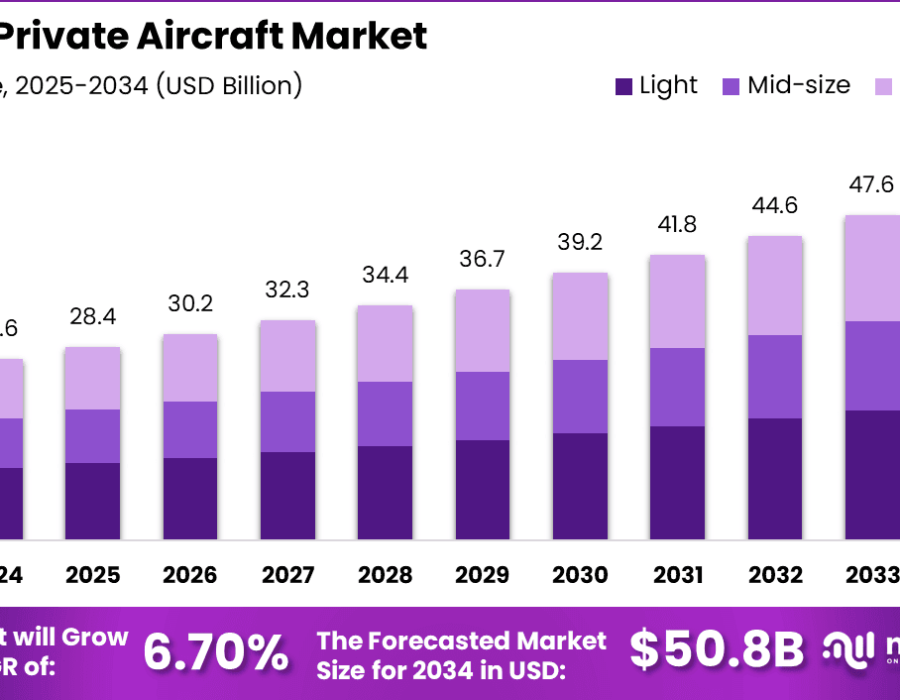The Global Private Aircraft Market size is expected to be worth around USD 80.8 Billion By 2034, from USD 26.6 billion in 2024, growing at a CAGR of 6.7% during the forecast period from 2025 to 2034.
Private aircraft, encompassing business jets, helicopters, and other aircraft types, are used for personalized travel, offering convenience, speed, and privacy. They cater to a niche market of high-net-worth individuals, corporate executives, and entities requiring urgent or confidential travel. This sector is distinguished by its focus on luxury, exclusivity, and high levels of customization.
The Global Private Aircraft Market refers to the worldwide industry centered on the design, manufacture, sale, and operation of privately owned aircraft. This market includes jets, turboprops, and helicopters used by high-net-worth individuals, corporations, and charter services. With the world becoming increasingly connected, there is a rising preference for privacy, security, and time-saving travel. This has helped private aviation become more mainstream, pushing the global market to grow steadily in recent years. Increasing ultra-high-net-worth individuals globally and rising business travel demand are boosting this industry's overall value and footprint.
Top driving factors in this market include the demand for on-demand, efficient travel and rising concerns over public health and safety, especially after recent global health events. Private jets offer point-to-point travel, reducing time spent in airports and exposure to crowds. Additionally, personalized services and flexibility attract businesses and wealthy individuals. There's also a growing shift toward fractional ownership and membership-based models, making private aviation more accessible without full ownership burdens.
Demand analysis shows a growing preference for light and mid-size jets, especially in North America and Europe, where corporate travel remains dominant. Asia-Pacific is witnessing a strong uptick in demand, driven by economic growth and increasing disposable income. Additionally, the Middle East has long been a stronghold for luxury aviation, and this continues to drive significant orders for both new aircraft and charter services.
The increasing adoption of technologies like real-time maintenance tracking, AI-assisted route optimization, and high-speed in-flight connectivity is transforming the passenger and operator experience. Electric propulsion and hybrid-electric engines are also under development, paving the way for more sustainable aviation. These technologies are key in reducing operating costs, increasing safety, and delivering a better client experience.
Key reasons for adopting private aircraft include time efficiency, privacy, security, and productivity while traveling. Many companies view business aviation as an asset rather than a luxury, as it enables faster decision-making and agile operations. Executives and professionals are increasingly prioritizing comfort and convenience, especially when managing tight schedules and international engagements.





Comments